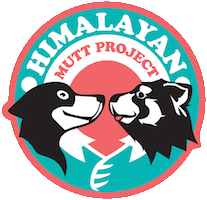Our work presented at Oxford and Cambridge
- Debby Ng
- May 17, 2019
- 3 min read

March was a busy month as we took our results from the distemper survey in May 2018 to the world stage! I spent two thoroughly fast-paced weeks between Oxford University's WildCRU Conservation Geopolitics Forum, and the Student Conference on Conservation Science at the University of Cambridge. It was a fantastic opportunity to share our work with scientists and conservationists from all over the world. We had invigorating debates and received lots of useful feedback for future work in the region. I particularly enjoyed learning about the different experiences of colleagues working with wildlife in similar environments.

Ugyen Penjor (above left) works with tigers in Bhutan Himalaya, and was curious about the methods we have used in Nepal to control dog numbers and understand disease. He shared about tigers that had parasites usually found in domestic dogs, and was concerned about how little the global community is aware of these silent and invisible killers that threaten our wildlife. Like Nepal, Bhutan has a burgeoning problem with domestic dogs. Many of the challenges they face with implementing population control measures are similar to our challenges in Nepal Himalaya, for e.g. people are not willing to cull, even unwanted dogs, and prefer to leave them to fend for themselves in the wilderness. We constantly have to look for alternative methods that are effective and agreeable with the community.

James McTaggart (above center) is an educational psychologist that was curious about how culture and social conventions regulate and influence the movement and ownership of dogs in the Himalaya. I thoroughly enjoyed our discourse! Jorgelina Marino (above right) is a conservation ecologist who works with large carnivores all over the world! One of her main projects focuses on the spread and risk of rabies from domestic dogs to the critically endangered Ethiopian wolf.

In Cambridge, I was grateful to have the support and interest of colleagues from Nepal and India, where our distemper work is most relevant. Gopal Khanal (left of me) works with predator-livestock conflict in Shey-Phuksundo National Park in Dolpa far western Nepal. He very kindly invited me to present our findings to his colleagues in Kathmandu the next time I visit. I am thrilled by the opportunity to learn and collaborate with these highly-charged and enthusiastic conservationists in South Asia!

One of the nice tit-bits from this trip was the opportunity to be among a small group of people selected to ask Sir David Attenborough a question. In a forum for SCCS delegates, Sir David urged conservationists to remain optimistic despite the bad news because "pessimism gets you nowhere". He encourages, "There are successes everywhere and we need to focus on the stories where people have been converted." I was very inspired to experience his enthusiasm, wonder, and optimism for people and our natural world.

I also got the opportunity to meet other National Geographic Explorers and learn about their great projects all over the world. I had a great conversation with Hans Bauer (above right), a lion conservationist who has been working in West and Central Africa for a quarter of a century. Hans is no stranger to the risks and dangers of canine distemper in wildlife - the disease decimated lion populations in the late 90s. Hans had lots of good questions about managing free-roaming domestic dogs and identifying disease in wildlife.

I also joined colleagues for a workshop on marketing for conservation, moderated by Ewan Macdonald (right of me). The workshop provided an intimate space to share and learn about the methods used to communicate with scientists, donors, and beneficiaries. It was through this workshop that I got to meet Professor Bill Laurence, based at James Cook University in Australia, who was so intrigued by our work with communities in Nepal that he invited me to share our work with his community at JCU later this year! See you in Cairns!

The WildCRU Conservation Geopolitics Forum (above) had 191 attendees from Europe, North America, Australia, 9 African countries, 7 Asian countries, 5 Latin American countries and Iran from the Middle East. The Student Conference on Conservation Science had 91 student delegates from around 50 countries, and was visited by 112 staff or representatives from 49 conservation agencies, institutes and NGOs.
The opportunity to attend both these conferences was made possible by a Lyda Hill/National Geographic Funding Opportunity for Women.
































Comments